Browse lipids - Glycerophospholipids (GP)
| Lipid Name | Description | |
|---|---|---|

|
PE(20:0/18:2(9Z,12Z)) |
PE(20:0/18:2(9Z,12Z)) is a lipid of Glycerophospholipids (GP) class. |

|
68755-14-6 |
68755-14-6 is a lipid of Glycerophospholipids (GP) class. |
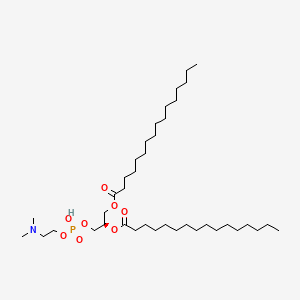
|
3922-61-0 |
3922-61-0 is a lipid of Glycerophospholipids (GP) class. |
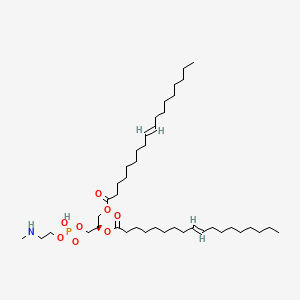
|
PE-NMe(18:1(9E)/18:1(9E)) |
PE-NMe(18:1(9E)/18:1(9E)) is a lipid of Glycerophospholipids (GP) class. The involved functions are known as conjugation and enzyme activity. Pe-nme(18:1(9e)/18:1(9e)) often locates in Microsomes. |
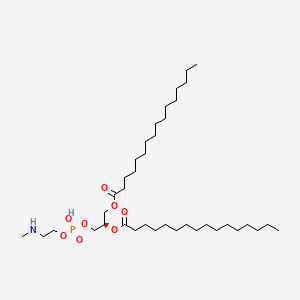
|
3930-13-0 |
3930-13-0 is a lipid of Glycerophospholipids (GP) class. |
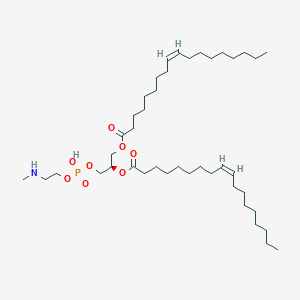
|
PE-NMe(18:1(9Z)/18:1(9Z)) |
PE-NMe(18:1(9Z)/18:1(9Z)) is a lipid of Glycerophospholipids (GP) class. |
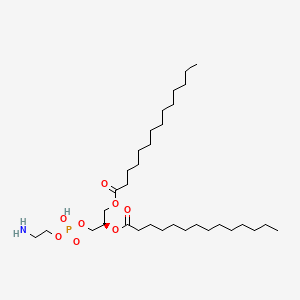
|
998-07-2 |
998-07-2 is a lipid of Glycerophospholipids (GP) class. 998-07-2 is associated with abnormalities such as Abnormal shape, Influenza, Cardiovascular Diseases, Rheumatoid Arthritis and Morphologically altered structure. The involved functions are known as Pressure- physical agent, Physiologic Organization, Process, Drug Interactions and Baresthesia. 998-07-2 often locates in I band, Membrane, Lipid Bilayers, Head and Tissue membrane. The associated genes with 998-07-2 are ATR gene, Fusion Protein and ADRBK1 gene. The related lipids are dimyristoylphosphatidylglycerol, 1,2-dimyristoylphosphatidylethanolamine, 1,2-oleoylphosphatidylcholine, Octanols and Membrane Lipids. |

|
PE(15:0/20:0) |
PE(15:0/20:0) is a lipid of Glycerophospholipids (GP) class. Pe(15:0/20:0) is associated with abnormalities such as Exanthema, Infection, Painful Bladder Syndrome, Obesity and Fatty Liver. The involved functions are known as conjugation, Transcription, Genetic, Sinking, Autophagy and Protein Biosynthesis. Pe(15:0/20:0) often locates in membrane fraction, soluble, Membrane, Body tissue and Tissue membrane. The associated genes with PE(15:0/20:0) are GABARAPL2 gene, ATG10 gene, ATG12 gene, SLC33A1 gene and GABARAP gene. The related lipids are Liposomes, Lipopolysaccharides, Phosphatidylserines, Membrane Lipids and Cardiolipins. The related experimental models are Knock-out and Cancer Model. |
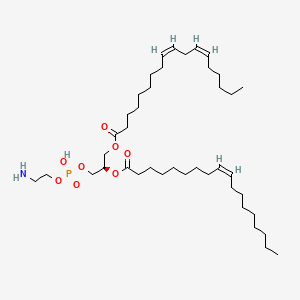
|
PE(18:2(9Z,12Z)/18:1(9Z)) |
PE(18:2(9Z,12Z)/18:1(9Z)) is a lipid of Glycerophospholipids (GP) class. |
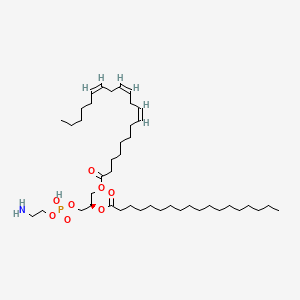
|
PE(20:3(8Z,11Z,14Z)/18:0) |
PE(20:3(8Z,11Z,14Z)/18:0) is a lipid of Glycerophospholipids (GP) class. |
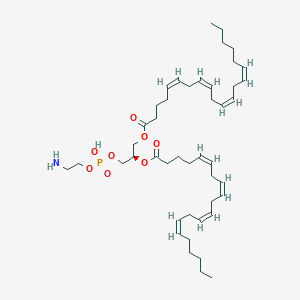
|
PE(20:4(5Z,8Z,11Z,14Z)/20:4(5Z,8Z,11Z,14Z)) |
PE(20:4(5Z,8Z,11Z,14Z)/20:4(5Z,8Z,11Z,14Z)) is a lipid of Glycerophospholipids (GP) class. |

|
PE(20:4(5Z,8Z,11Z,14Z)/16:0) |
PE(20:4(5Z,8Z,11Z,14Z)/16:0) is a lipid of Glycerophospholipids (GP) class. |
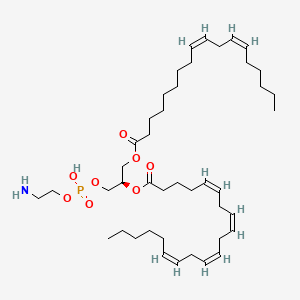
|
PE(18:2(9Z,12Z)/20:4(5Z,8Z,11Z,14Z)) |
PE(18:2(9Z,12Z)/20:4(5Z,8Z,11Z,14Z)) is a lipid of Glycerophospholipids (GP) class. |
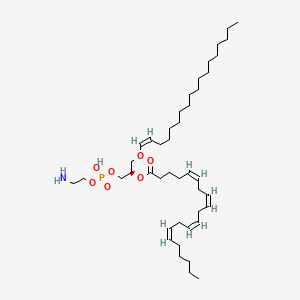
|
1-(1Z-octadecenyl)-2-(5Z,8Z,11Z,14Z-eicosatetraenoyl)-sn-glycero-3-phosphoethanolamine |
1-(1Z-octadecenyl)-2-(5Z,8Z,11Z,14Z-eicosatetraenoyl)-sn-glycero-3-phosphoethanolamine is a lipid of Glycerophospholipids (GP) class. |

|
PE(P-18:0/18:2(9Z,12Z)) |
PE(P-18:0/18:2(9Z,12Z)) is a lipid of Glycerophospholipids (GP) class. |